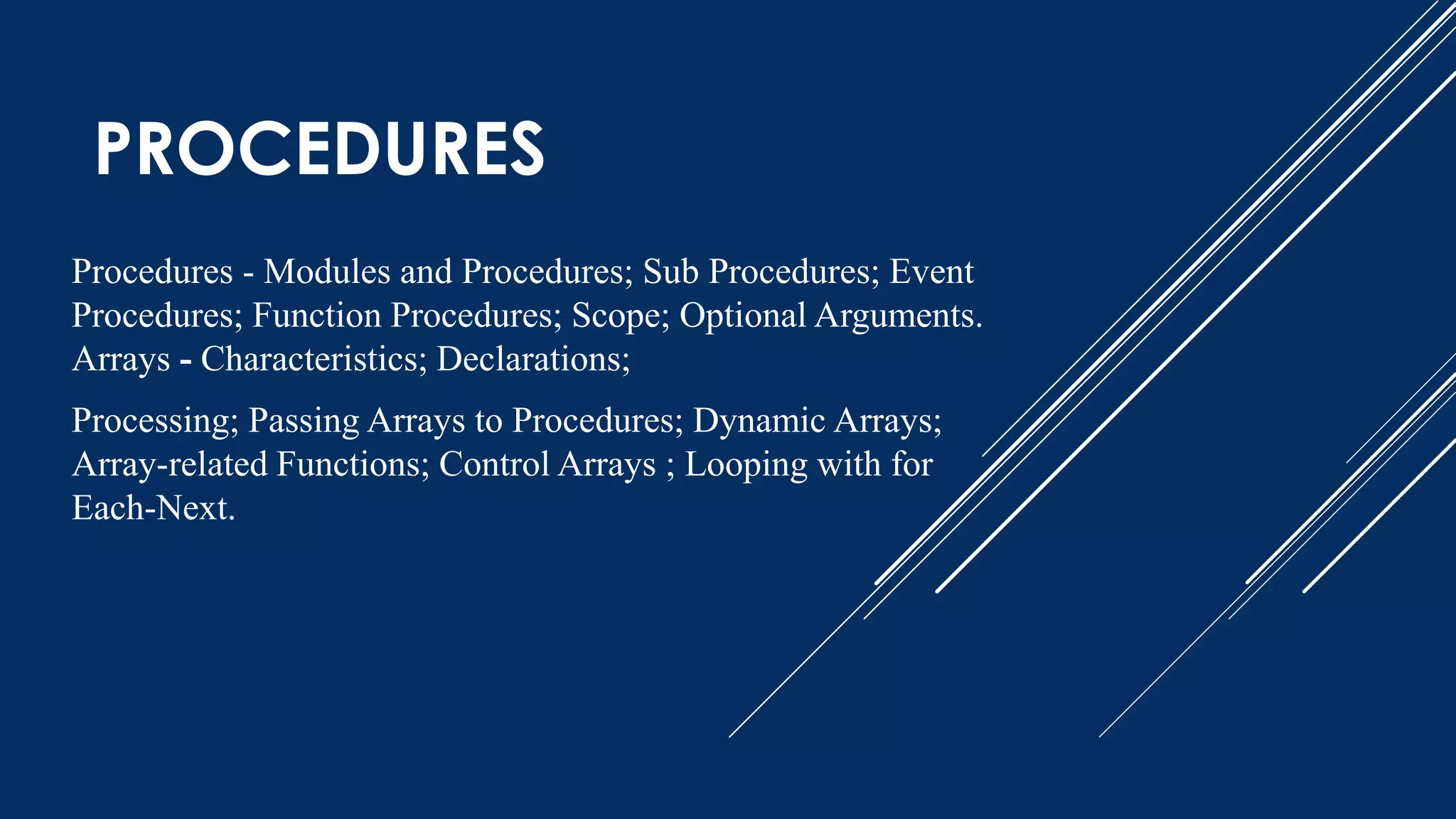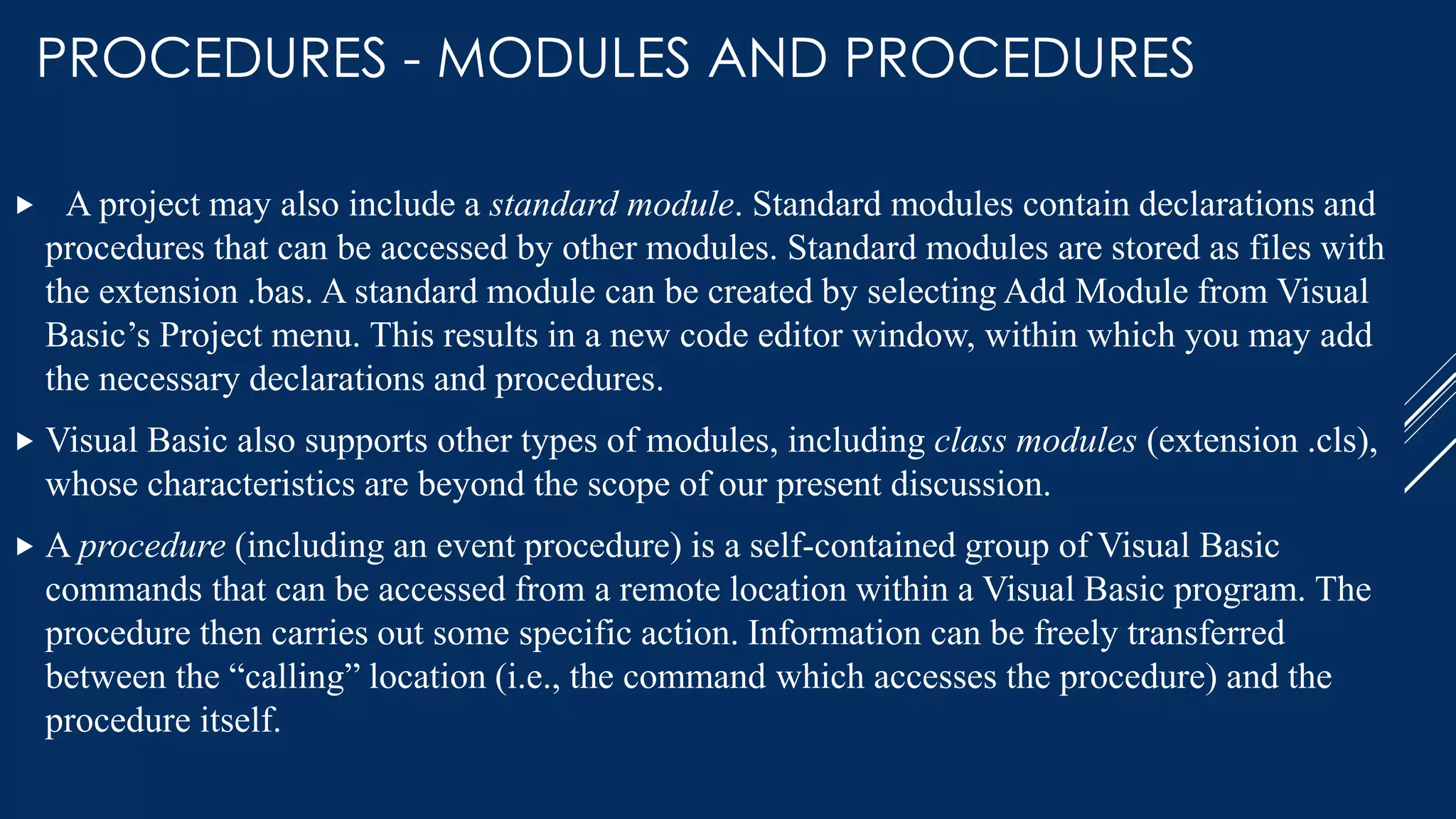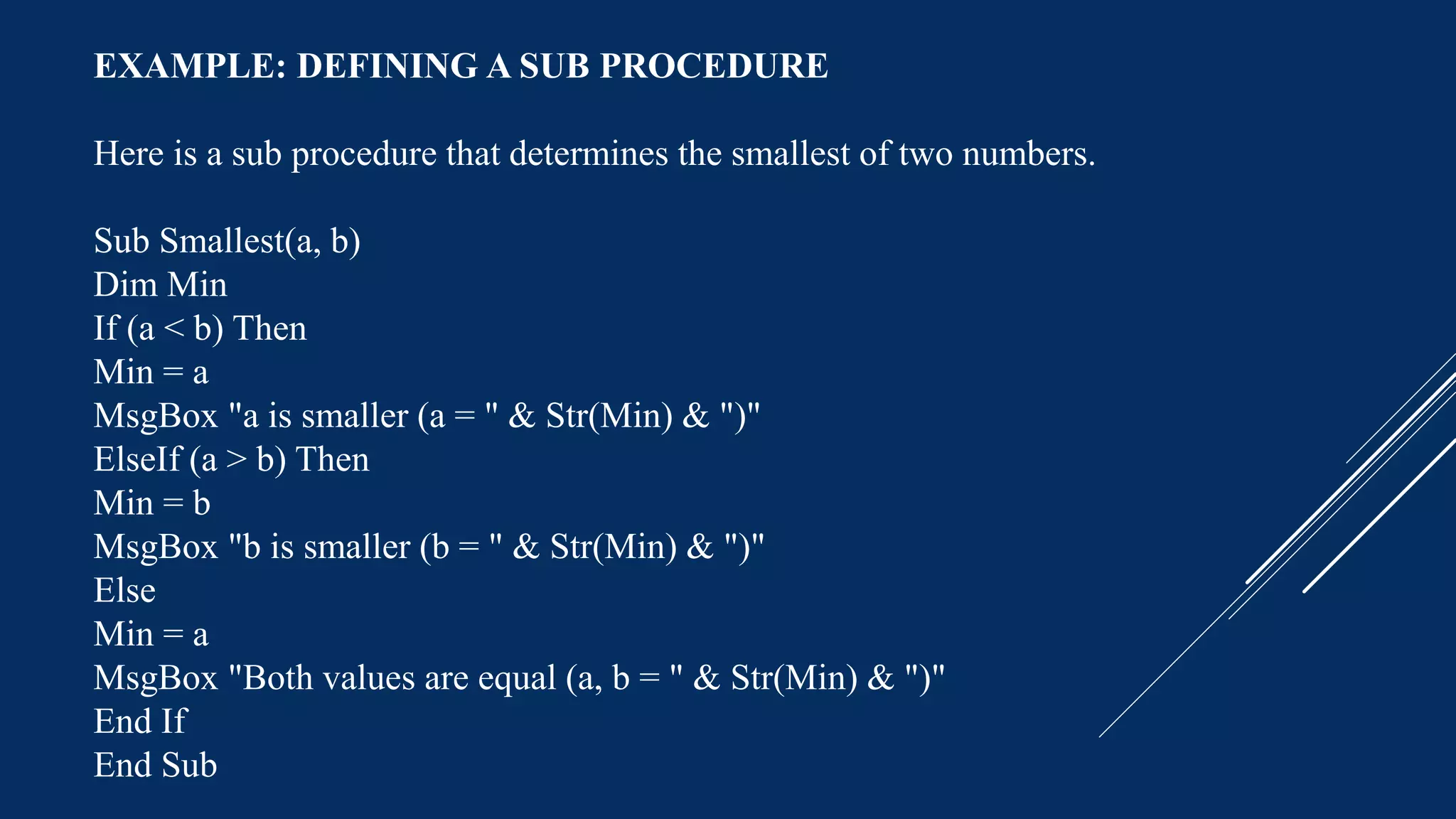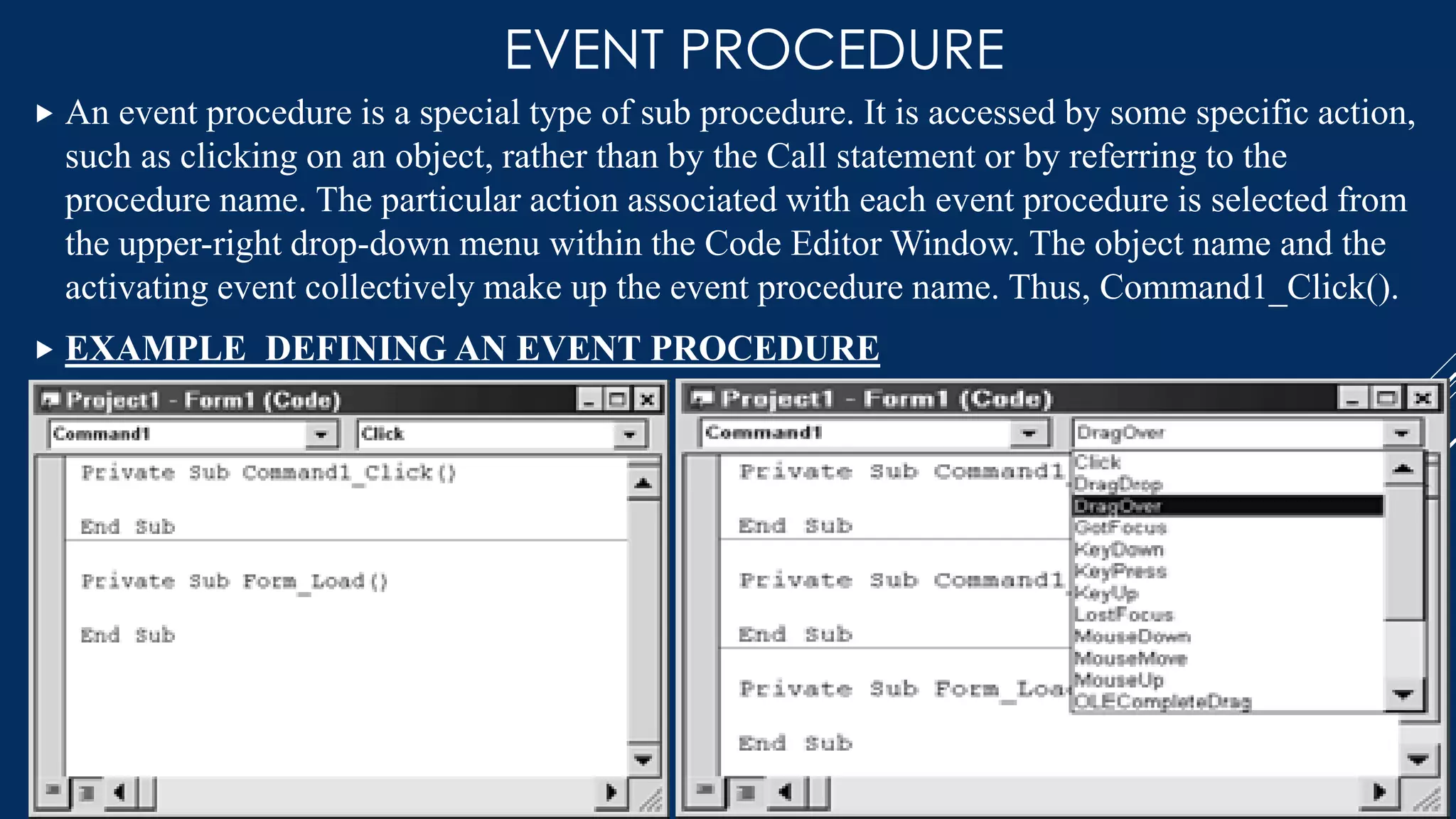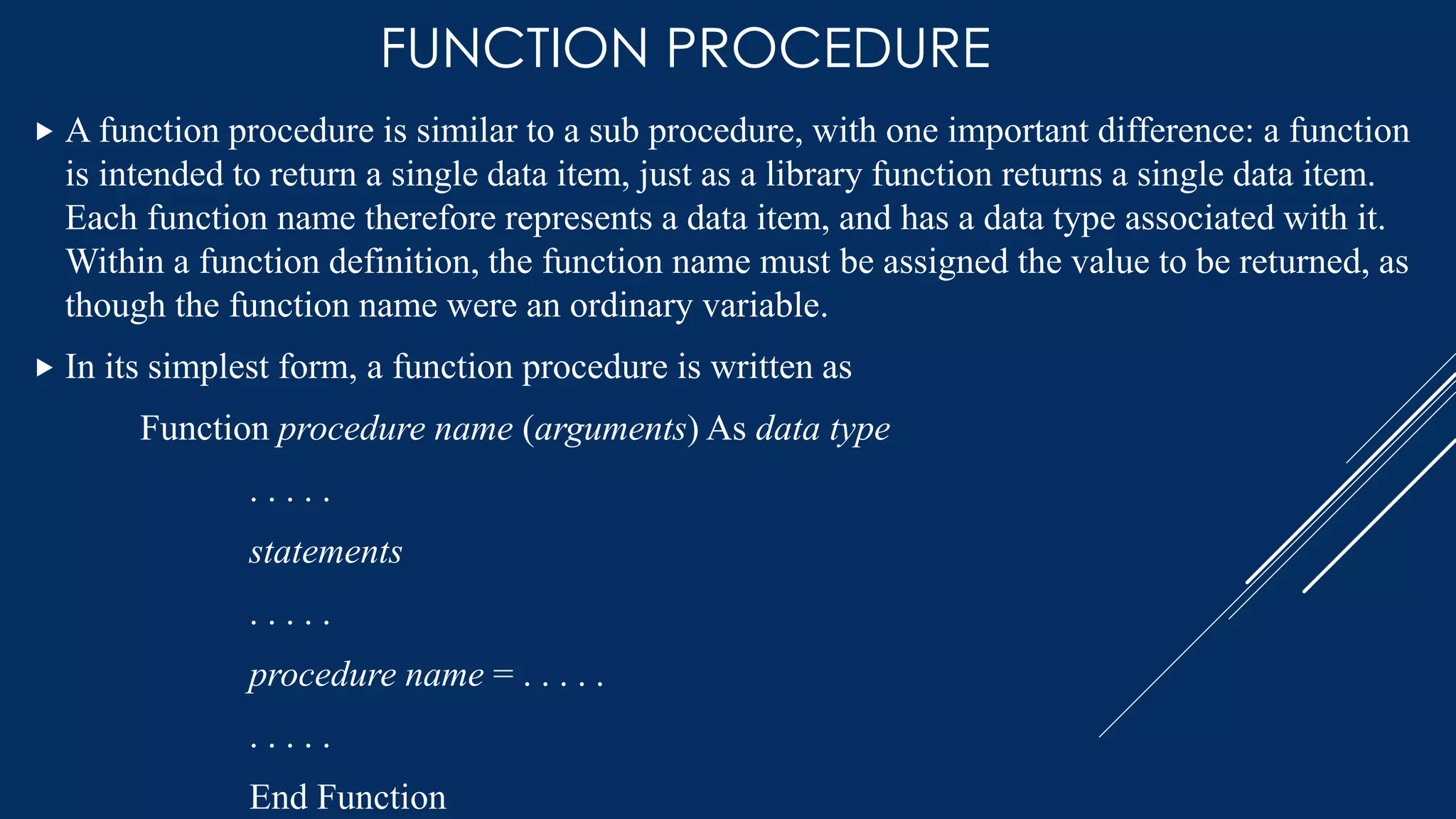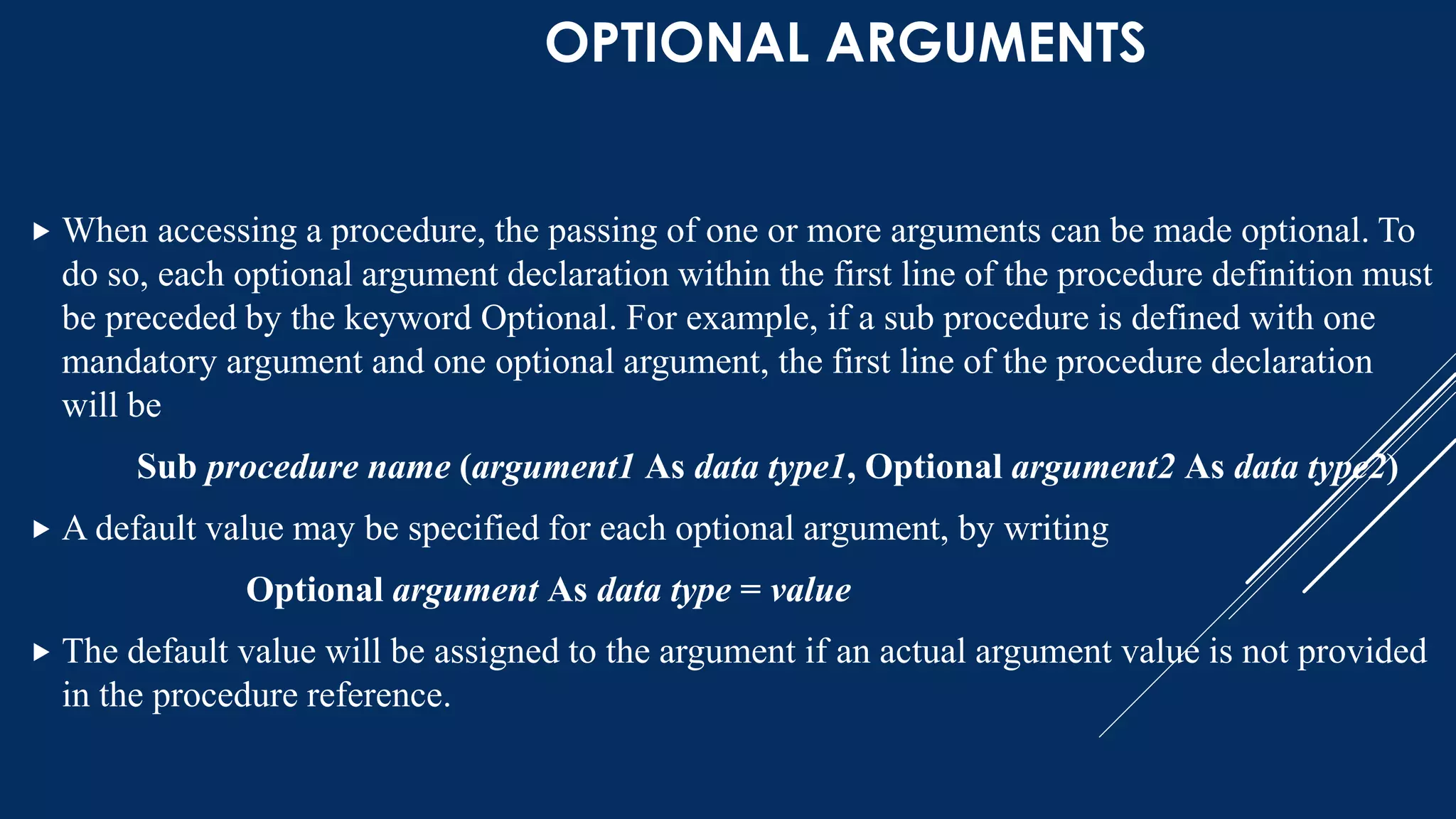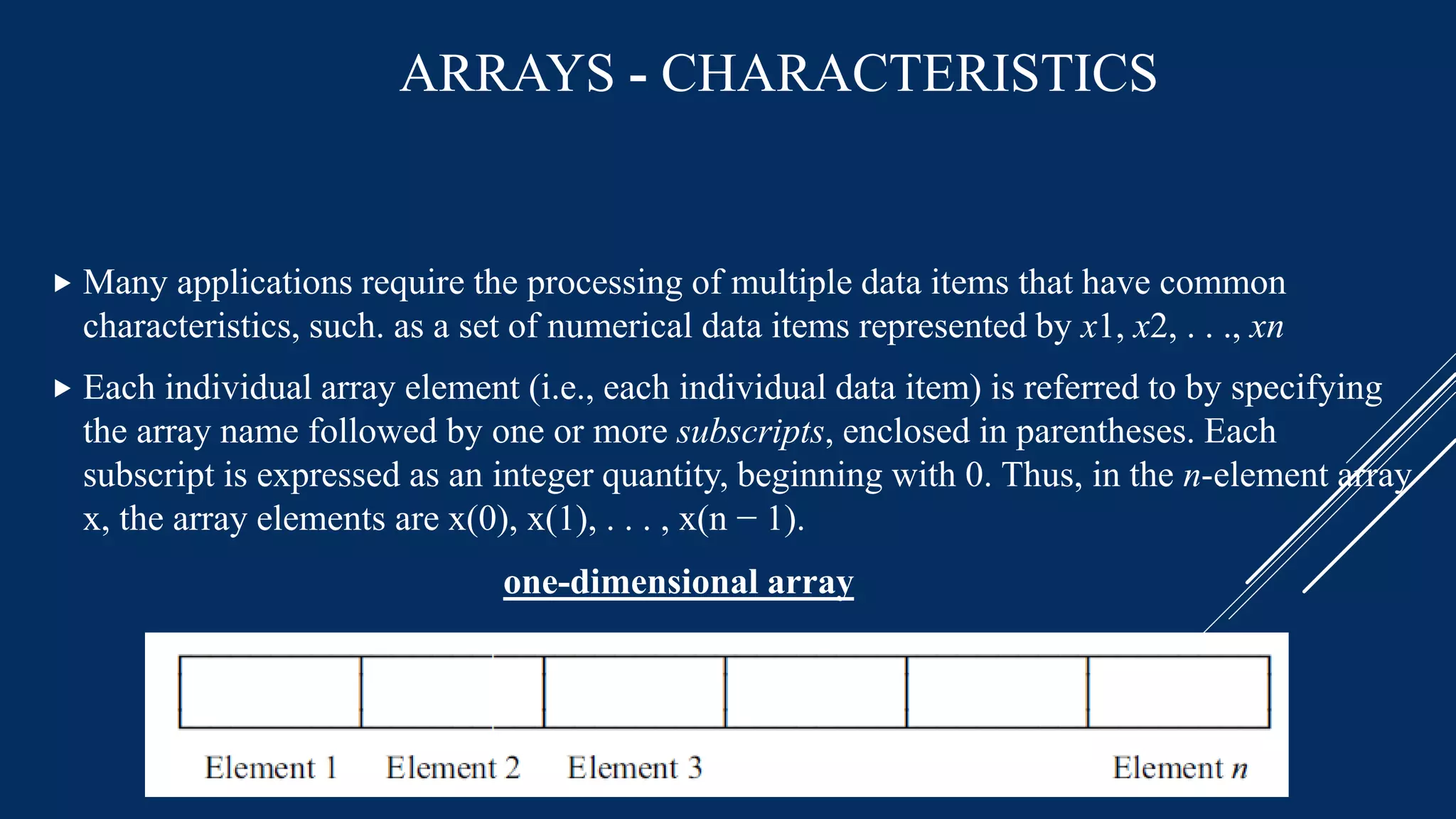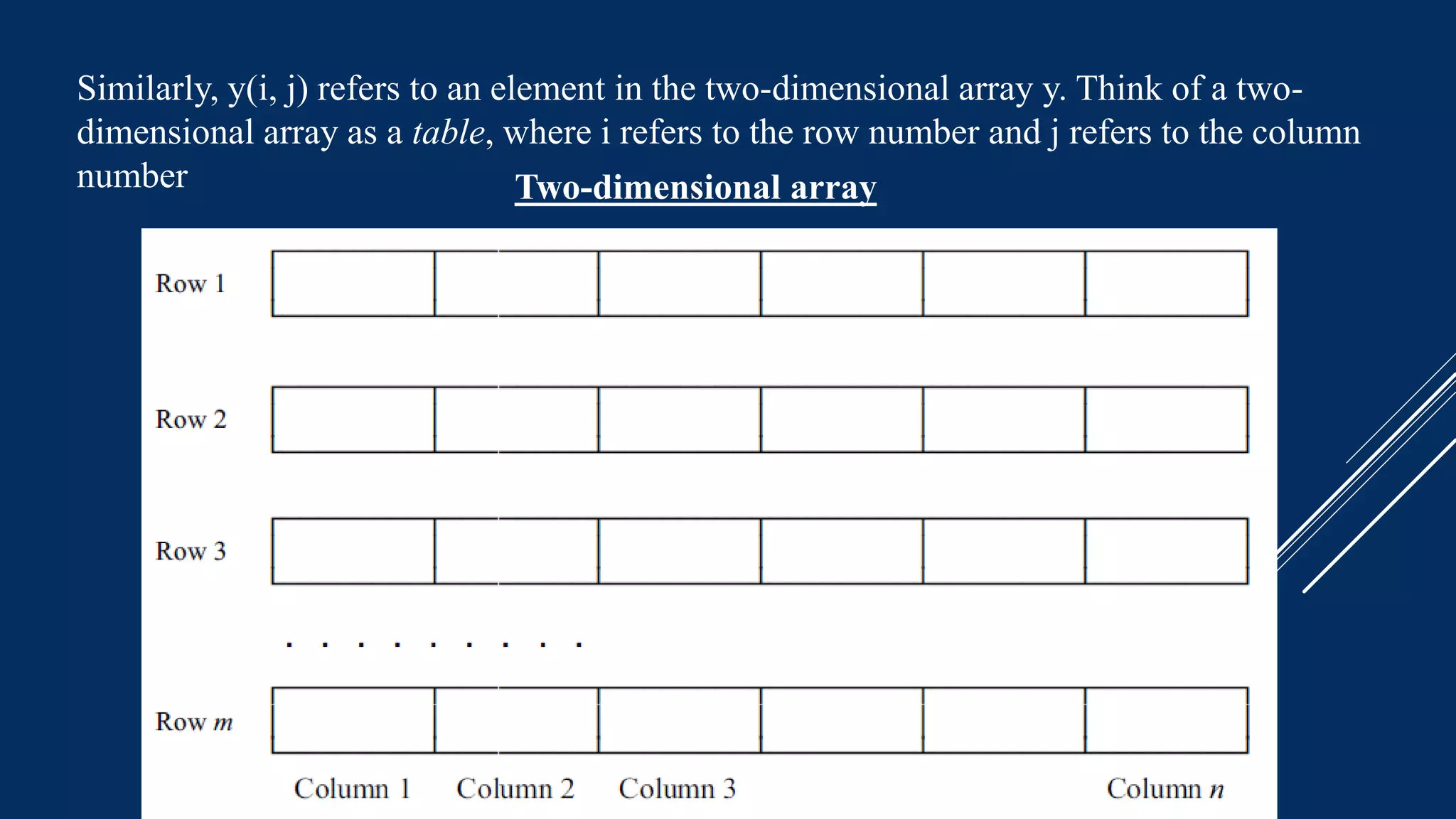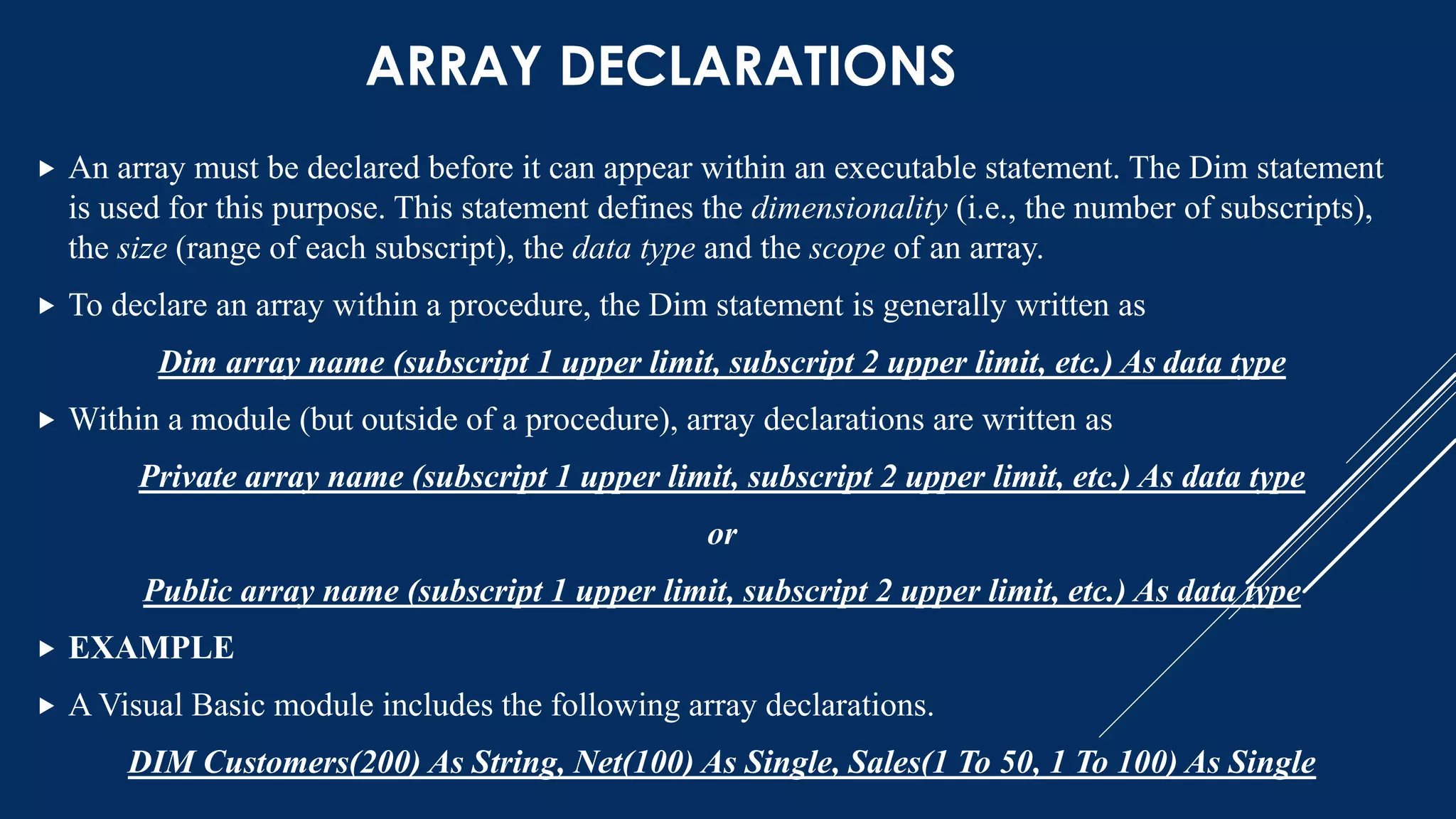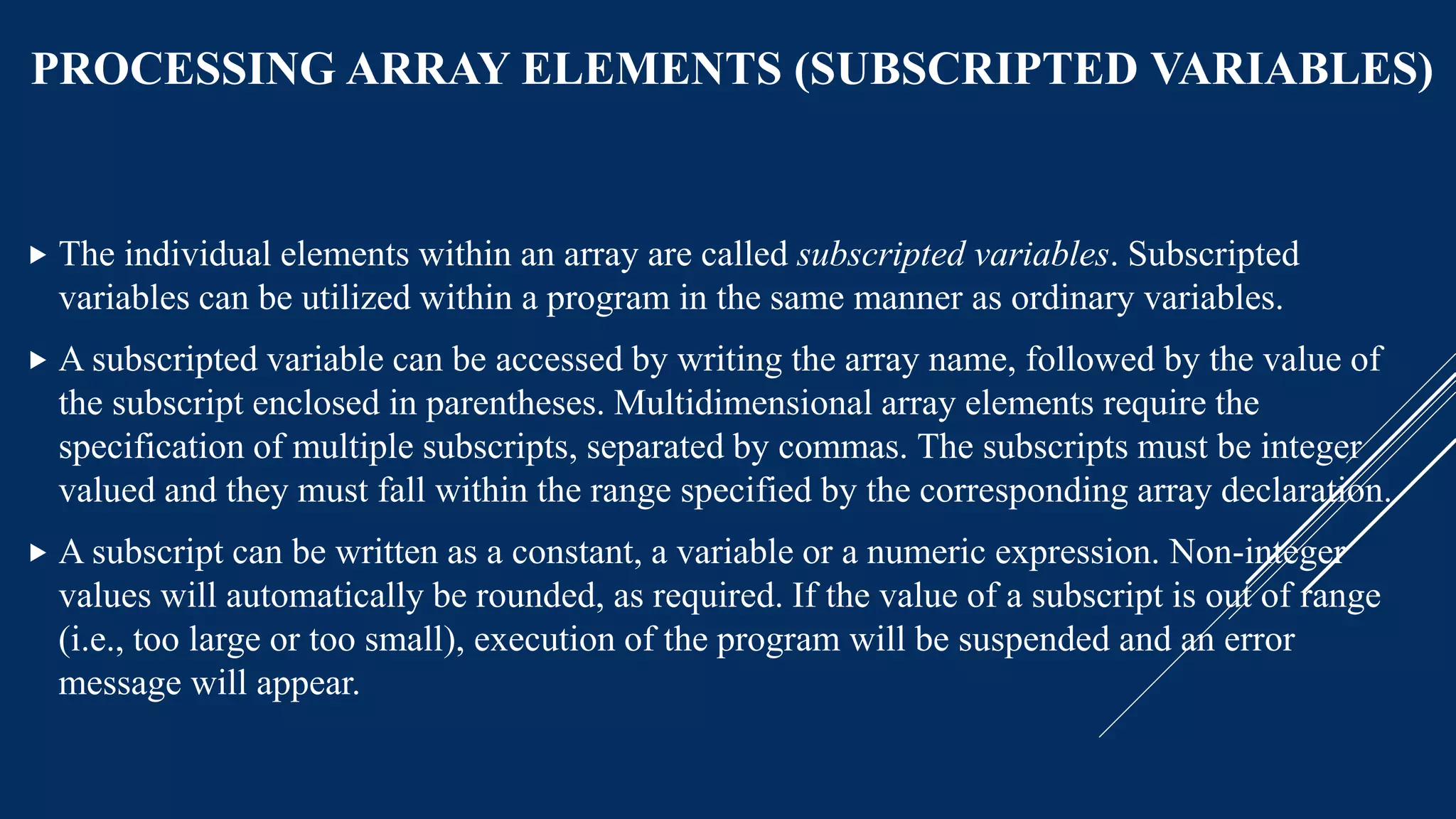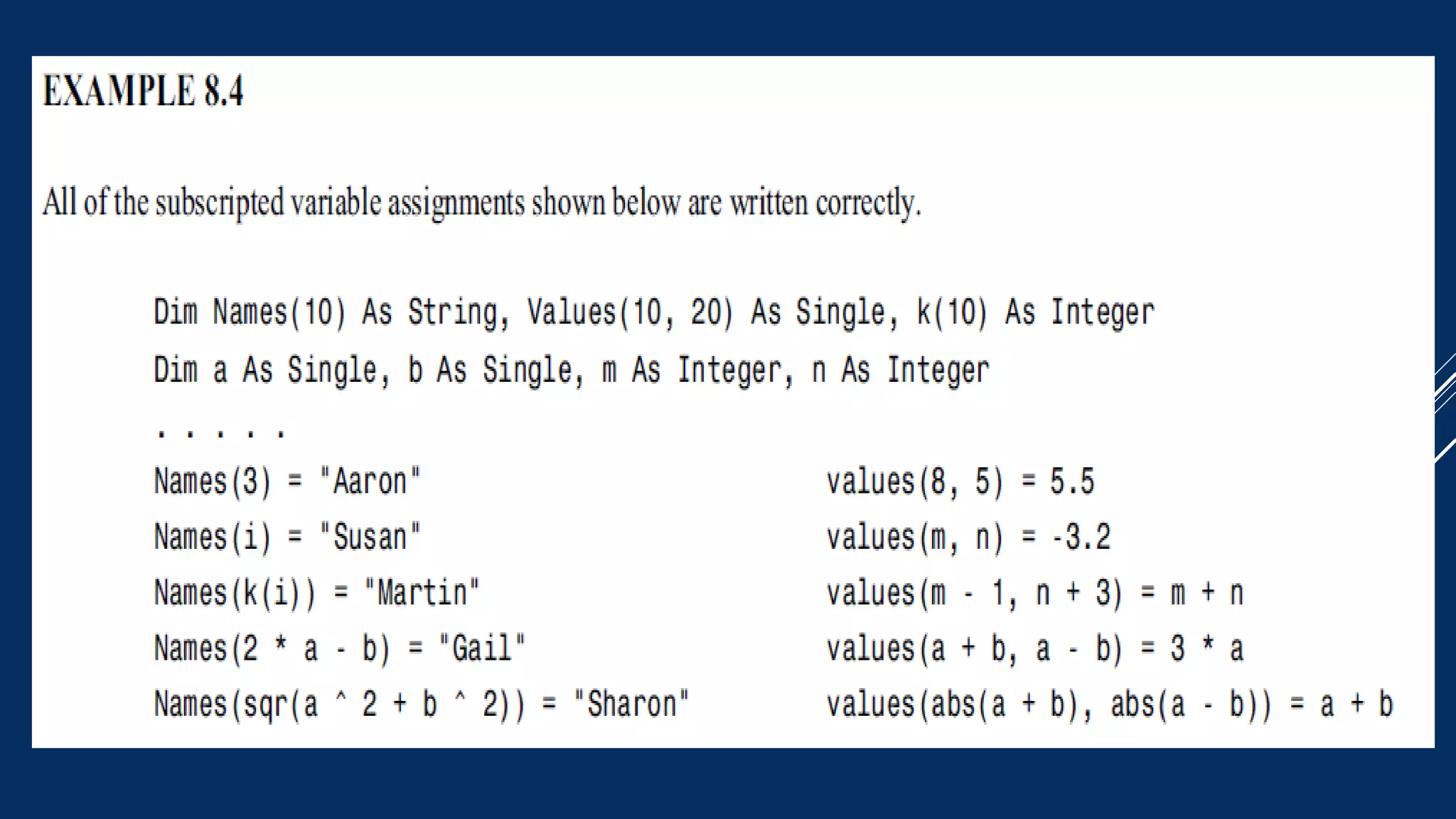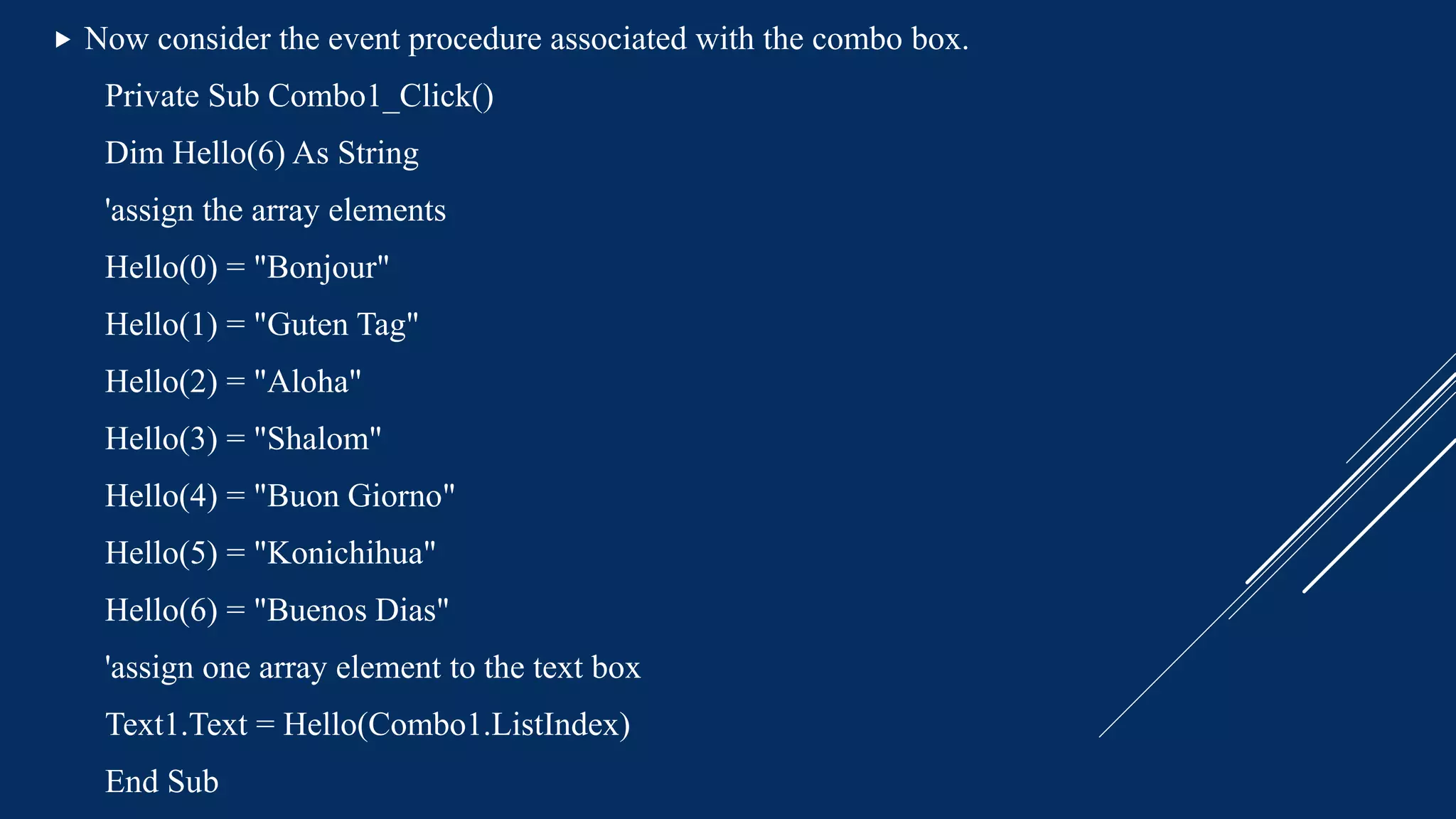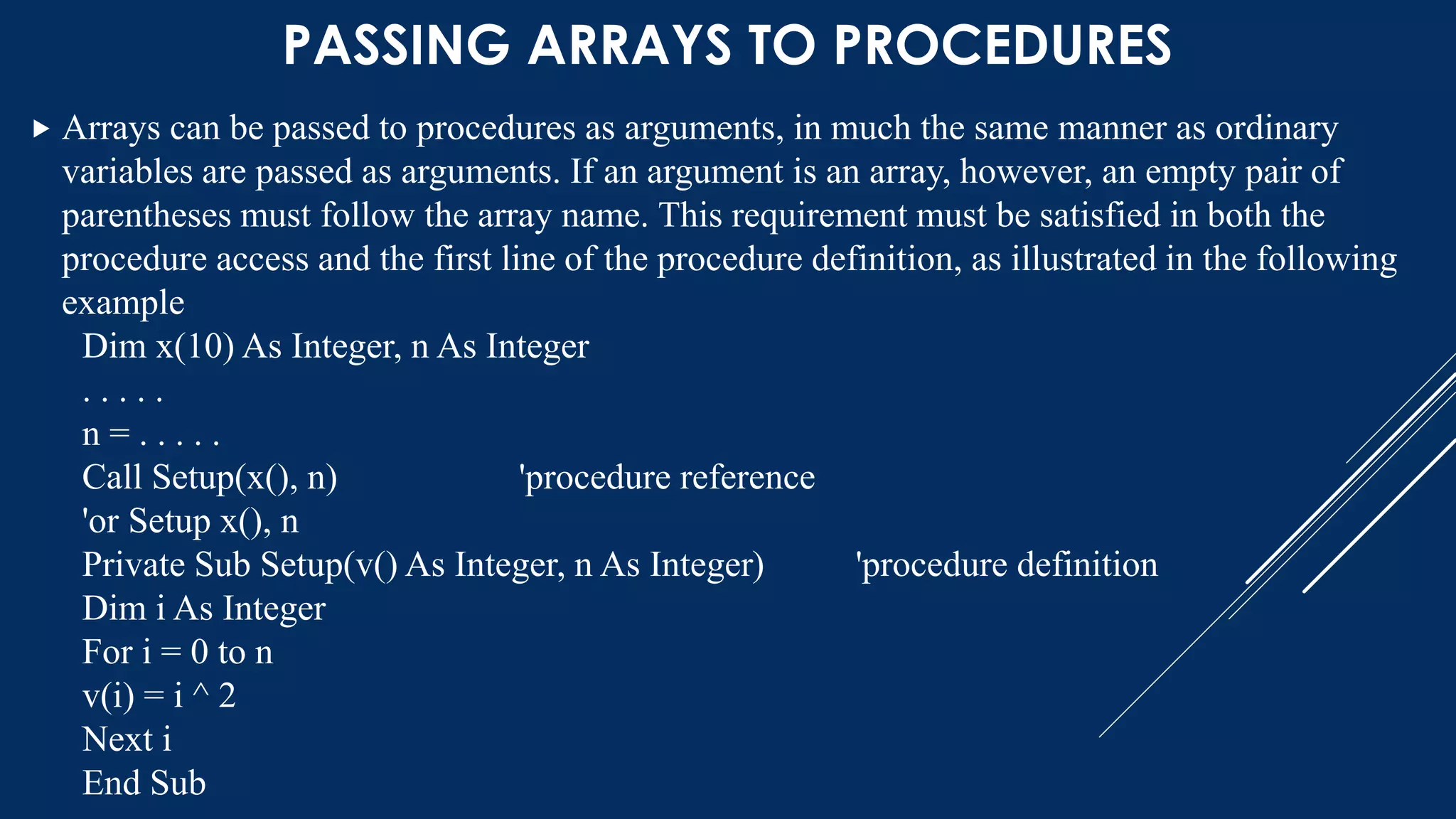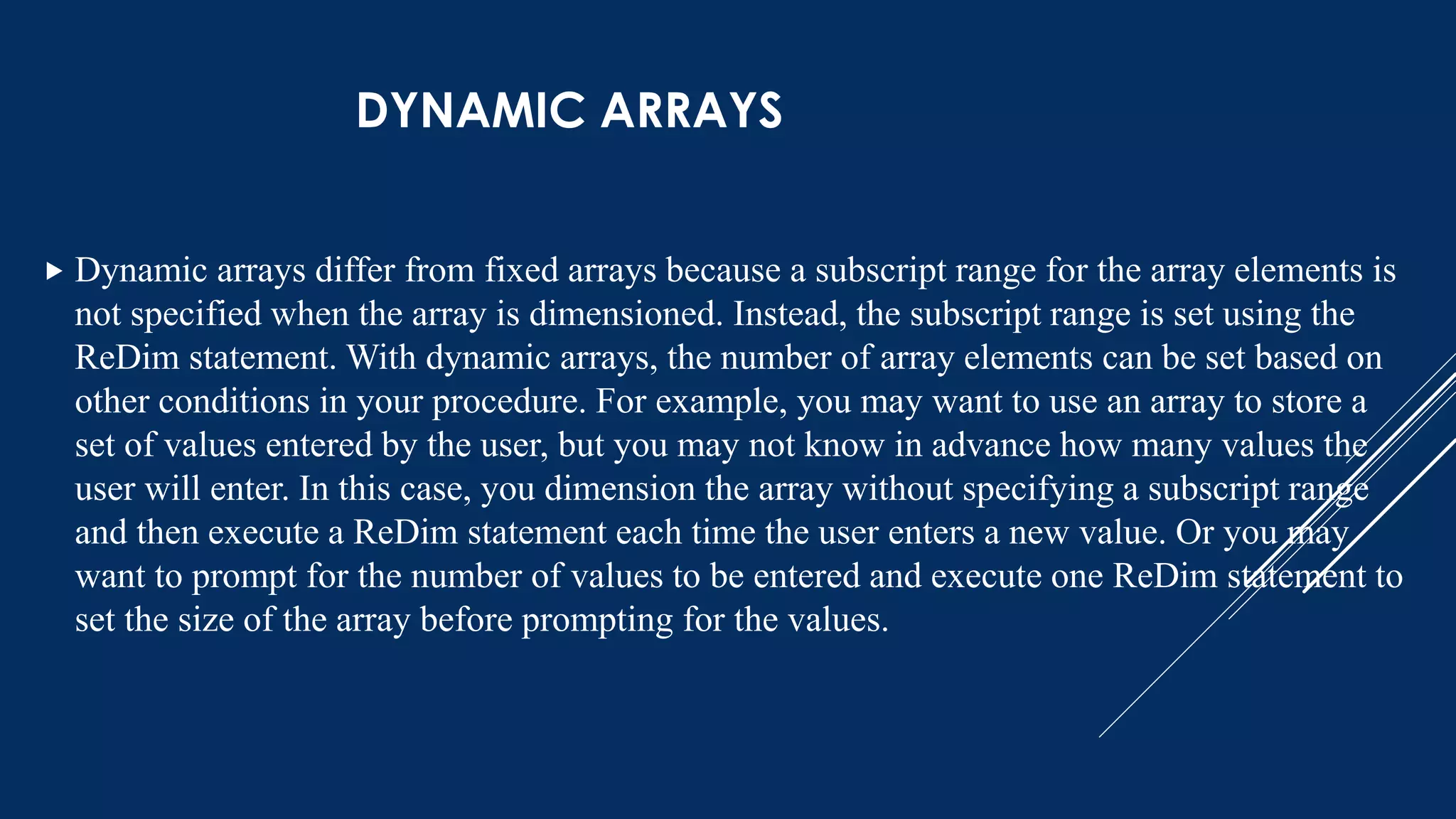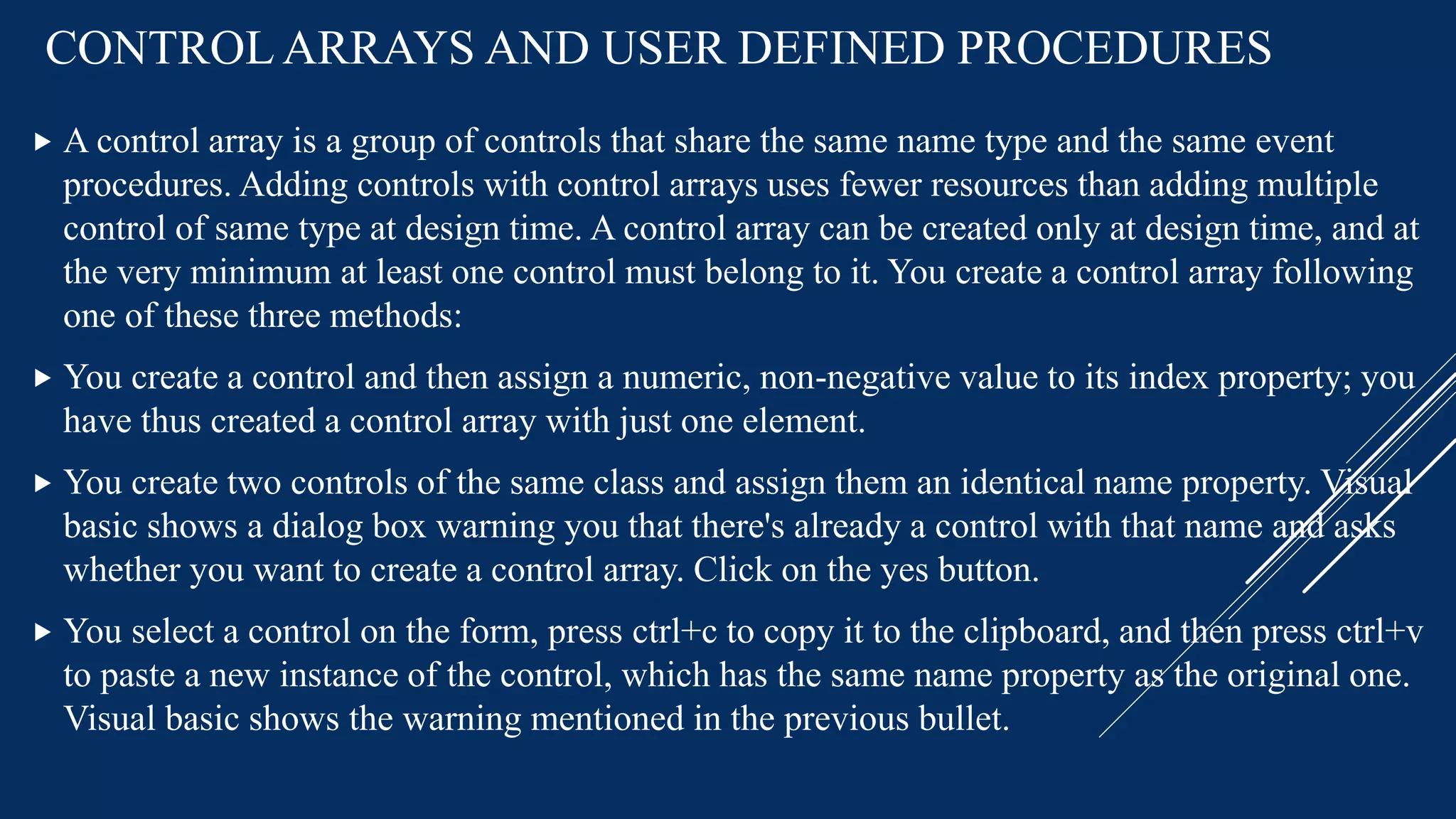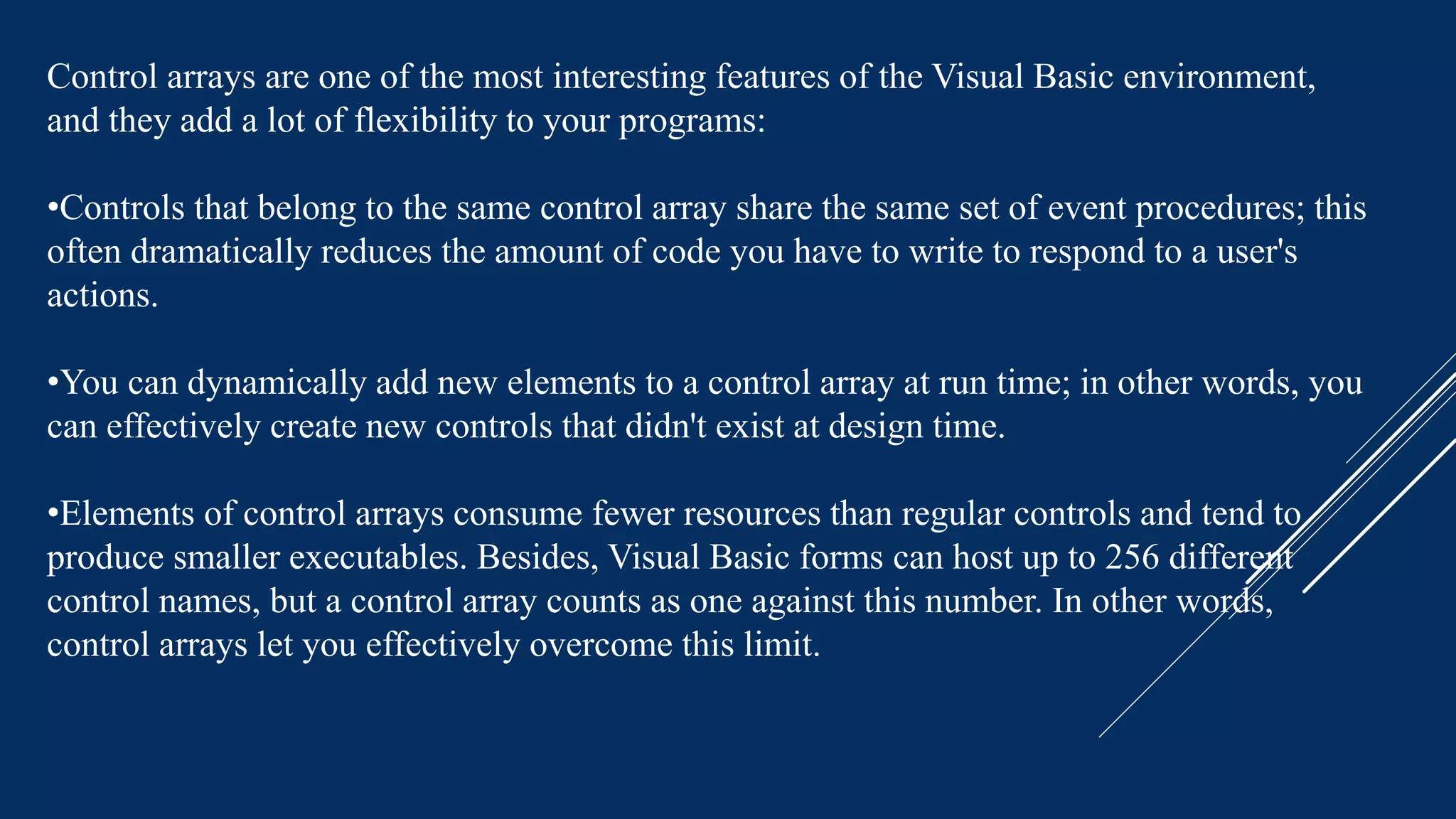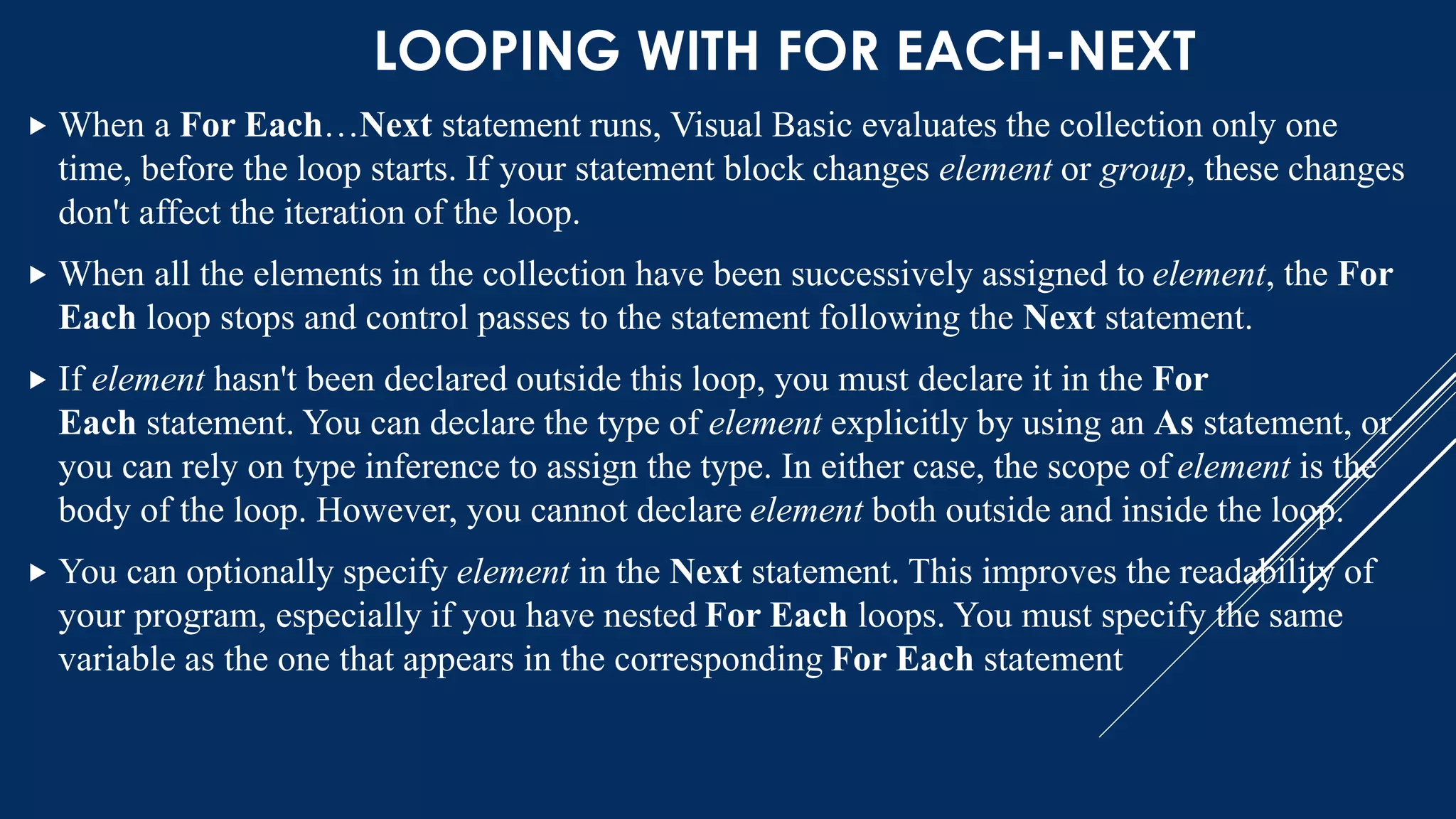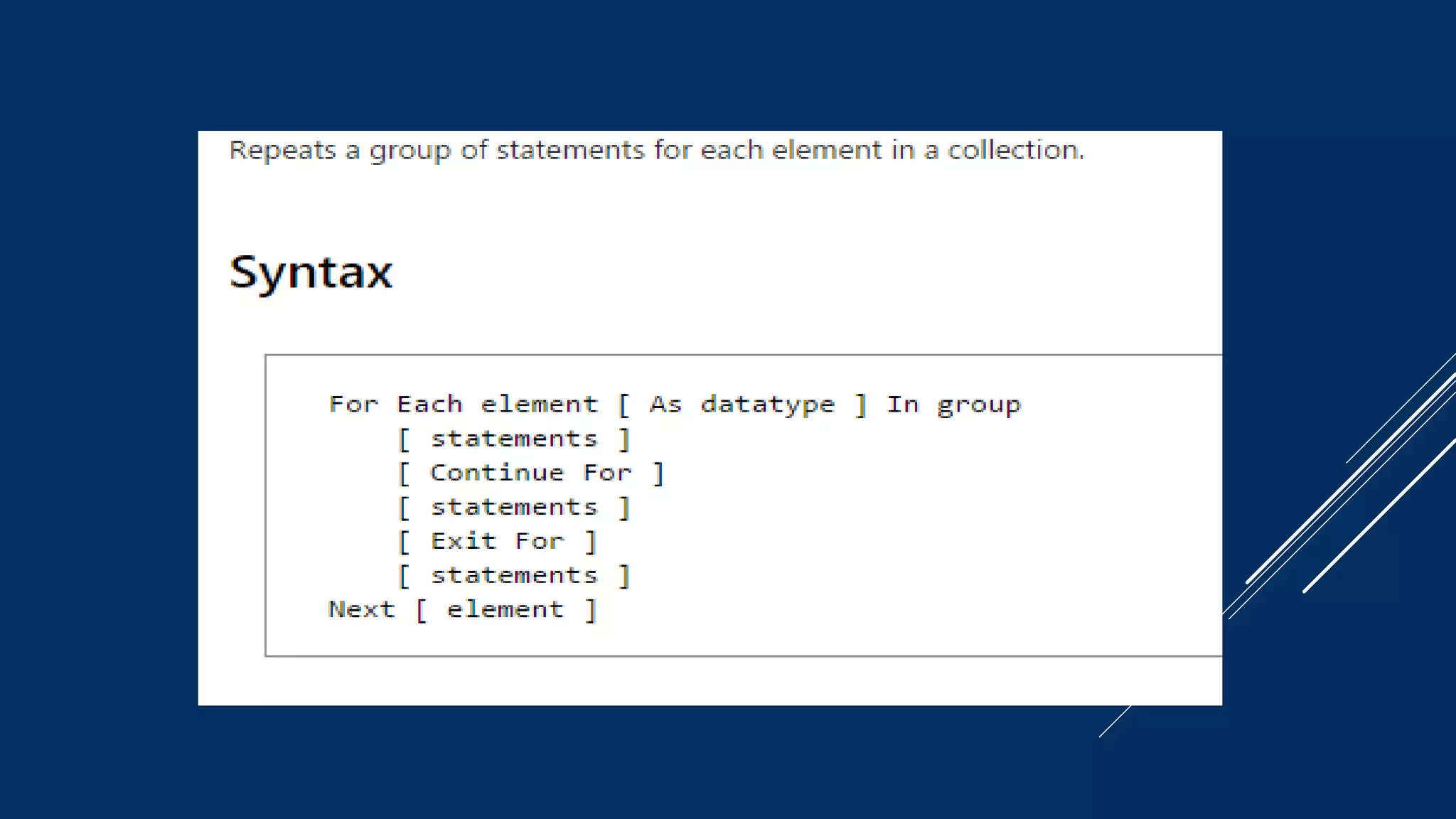The document discusses various aspects of procedures in Visual Basic, including:
1) Procedures can be modules, sub procedures, function procedures, or event procedures. Sub and function procedures contain commands to perform actions. Event procedures are triggered by user interactions.
2) Arrays allow processing of multiple data items and are declared with Dim before use. Array elements are accessed via subscripts. Arrays can be passed to procedures.
3) Procedures can take optional arguments and have public or private scope. Control arrays manage groups of identical controls to reduce resources. Looping with For Each iterates over all elements of a collection.
